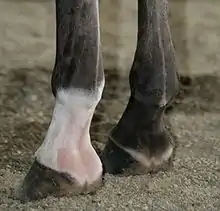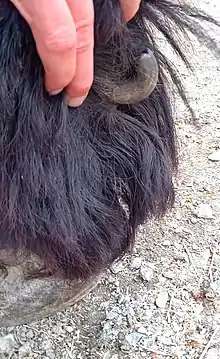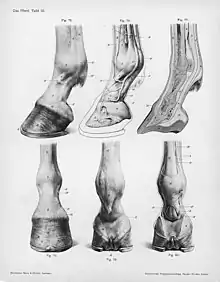

The ergot is a small callosity (Calcar metacarpeum and Calcar metatarseum) on the underside of the fetlock of a horse or other equine. Some equines have them on all four fetlocks; others have few or no detectable ergots. In horses, the ergot varies from very small to the size of a pea or bean, larger ergots occurring in horses with "feather" – long hairs on the lower legs. In some other equines, the ergot can be as much as 3.8 cm (1.5 in) in diameter.[1]
Ergot comes from the French word for rooster's spur.[2]
Evolution


Like the chestnut, the ergot is thought to be a vestige of some part of the ancestral foot of the multi-toed Equidae, the ergot corresponding to the sole pad of other extant members of Perissodactyla, such as the tapir and rhinoceros.[1] Unlike the chestnut, which in the same individual may be large on the forelegs and smaller or even absent on the hindlegs, according to Ridgeway,[1] the ergot is of roughly equal size on all four legs. However, as stated above, it is often noted that the ergot can be absent on some or all legs.